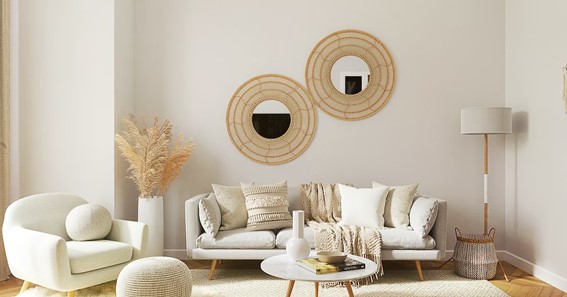As the world becomes more environmentally conscious, the demand for sustainable and eco-friendly products has increased. This includes the furniture industry, where there is a growing interest in sustainable furniture options.
Understanding Sustainable Furniture Design
Sustainable furniture design focuses on minimizing the environmental impact throughout the entire lifecycle of a piece of furniture, from sourcing materials to manufacturing and disposal. Using materials that are renewable, recyclable, or made from recycled content is a key aspect of sustainable furniture design, reducing the reliance on finite resources. Manufacturing processes that prioritize energy efficiency, waste reduction, and emissions control contribute to the sustainability of furniture production. Designing furniture for durability and longevity helps reduce waste by extending the lifespan of products and reducing the need for replacement.
Exploring Eco-Friendly Materials in Sustainable Furniture
Sustainable furniture incorporates a range of eco-friendly materials that are both aesthetically pleasing and environmentally responsible. Bamboo: Known for its fast-growing nature, bamboo is a highly renewable resource that can be used as a sustainable alternative to traditional wood in furniture production. Reclaimed Wood: Utilizing reclaimed wood from old buildings, barns, or fallen trees not only reduces the demand for new timber but also adds unique character to furniture pieces. Recycled Plastic: By transforming post-consumer plastic waste into durable and practical furniture, this material helps reduce plastic pollution and landfill waste.
Eco-Conscious Manufacturing Processes for Sustainable Furniture
Manufacturing practices play a crucial role in determining the sustainability of furniture. Embracing eco-conscious processes minimizes the environmental impact. Energy-efficient manufacturing facilities reduce greenhouse gas emissions and conserve energy by incorporating renewable energy sources and using energy-efficient machinery. Water conservation methods such as recycling and reusing water in manufacturing processes help minimize water waste, a precious natural resource. Waste reduction and recycling initiatives ensure that materials are utilized to their fullest potential, minimizing the need for virgin resources and reducing landfill waste.
Smart Furniture: The Intersection of Sustainability and Connectivity
Smart furniture adds an extra dimension to sustainable furniture design by incorporating technology that optimizes energy use and enhances functionality. Smart energy management systems integrated into furniture enable energy-saving features such as automated lighting, temperature control, and power-off functions. Built-in sensors and control systems allow for efficient space utilization by automating storage, seating adjustment, and transforming functionality to minimize furniture footprint. Connectivity features in smart furniture enable users to monitor and optimize energy usage, contributing to a greener and more sustainable lifestyle.
Click here – How To Enhance Learner Engagement: 6 Strategies (+Examples)
The Future of Sustainable Furniture: A Holistic Approach
The future of sustainable furniture lies in a holistic approach that considers every aspect of its lifecycle, from materials and manufacturing to usage and disposal. Designing furniture with modularity and adaptability in mind allows for easy repair, reconfiguration, and upgrades, extending the product’s lifespan and reducing waste. Implementing closed-loop systems for recycling and repurposing furniture components ensures that materials can be used for new products, minimizing waste and supporting a circular economy. Combining sustainable materials and smart features can result in furniture that not only reduces environmental impact but also enhances our quality of life through improved functionality and connectivity.
Conclusion
Sustainable furniture is an important and growing segment in the furniture industry, driven by increased environmental awareness and demand for eco-friendly products. Through the use of renewable materials, eco-conscious manufacturing processes, and the integration of smart features, sustainable furniture aims to minimize environmental impact while providing functional and aesthetically appealing designs. As we continue to prioritize sustainability in our daily lives, the future of furniture design looks promising, offering innovative and environmentally responsible solutions for our homes.

